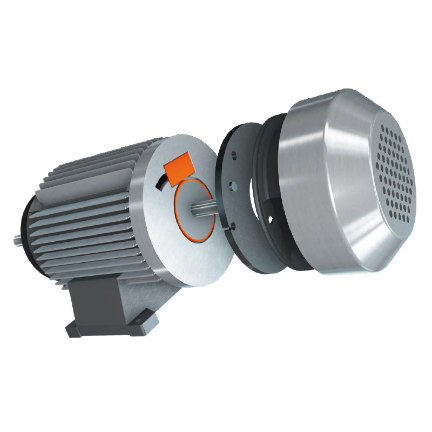To prevent failure in harsh settings where conventional bearings would deteriorate, Tekmatic provides a variety of bearingless encoders. Our bearingless encoders employ magnetic sensing technology to offer speed feedback and feature a magnetic pulse wheel that can be mounted directly to a motor shaft and a redhead or sensor secured to the motor’s mounting bracket or frame. There is a wide range of shaft diameters, housing materials, and resolutions available in Tekmatic’s stock of bearingless encoders.
What Is a Bearingless Encoder?
The bearings in conventional rotary encoders are unnecessary in bearingless encoders since they do not need to be physically connected to the spinning shaft. The encoder sensor housing and rotating wheel are held in place in bearingless encoders by mechanical fastening to the motor case.
What Are the Benefits of a Bearingless Encoder?
Magnetic sensing technology is commonly used in the construction of bearingless encoders because it is more resistant to dust, moisture, and filth effects than optical encoders. Encoders without internal bearings can have a longer service life because they eliminate a possible wear point and can be mounted directly to the motor housing.
Low Manufacturing Costs
The encoder may be adapted to your design rather than the other way around, thanks to its adaptability in shaft diameters.
Compact Design
Because of its radial sensing, it only requires a minimal amount of space for installation. Solutions that require a depth of installation of less than 12 mm are included. It may be mounted on the left or right side, giving you more options.
Excellent Speed Quality
Superior accuracy magnetic wheels made possible by years of experience with magnetization.
Long-Term Protection
Fully encased electronics and a design that eliminates the need for bearings mean that this design can offer both cheap operating costs and a high degree of IP protection. The encoder is sealed against dust and moisture while operating at high speeds. The separation of electronics from mechanical components increases its durability.
When is the Need for a Bearingless Encoder?
Bearingless encoders excel in harsh environments with big shock, vibration, and temperature fluctuations. The bearingless encoder is resilient to harsh environments that would damage conventional encoders.
What are the Applications of a Bearingless Encoder?
In various fields, bearingless encoders have already demonstrated their worth. The non-contact sensing method gives manufacturers of machining centers, wind turbines, mobile vehicles, elevators, and textile machines more design freedom since the sensors may be smaller, easier to integrate, and more resilient against harsh environmental conditions. They fit in where none have before and permit design evolution. The total price tag is cut drastically from initial planning to routine upkeep.

















